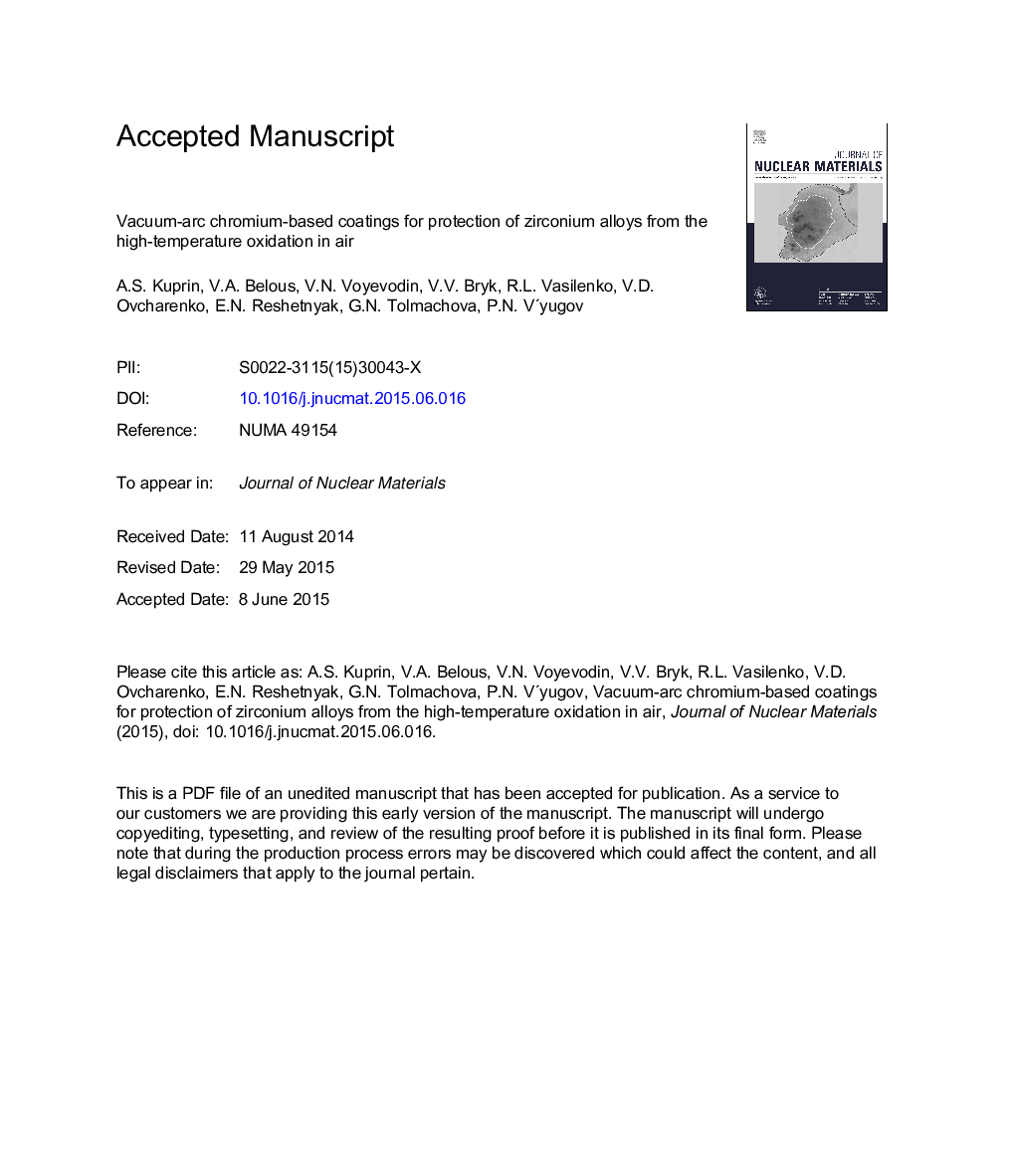| Article ID | Journal | Published Year | Pages | File Type |
|---|---|---|---|---|
| 7965366 | Journal of Nuclear Materials | 2015 | 12 Pages |
Abstract
It is shown that the hard multilayer coating effectively protects zirconium from the oxidation in air for 1 h at test temperatures. As a result of the oxidation in the coating the CrO and Cr2O3 oxides are formed which reduce the oxygen penetration through the coating. At maximum test temperature of 1100 °C the oxide layer thickness in the coating is about 5 μm. The tube shape remains unchanged independent of alloy type. It has been found that uncoated zirconium oxidizes rapidly throughout the temperature range under study. At 1100 °C a porous monoclinic ZrO2 oxide layer of â¥120 μm is formed that leads to the deformation of the samples, cracking and spalling of the oxide layer.
Related Topics
Physical Sciences and Engineering
Energy
Nuclear Energy and Engineering
Authors
Ð.S. Kuprin, V.Ð. Belous, V.N. Voyevodin, V.V. Bryk, R.L. Vasilenko, V.D. Ovcharenko, E.N. Reshetnyak, G.N. Tolmachova, P.N. V'yugov,
